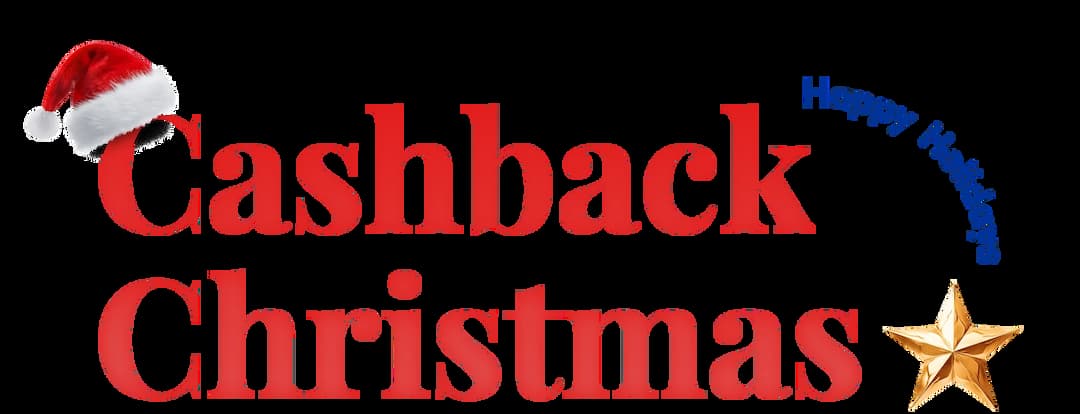What is the Difference Between a Predictive Dialer and a Progressive Dialer?

Understanding the differences between predictive and progressive dialers can help optimize your business operations and achieve higher contact rates for better customer experiences.
What is a Predictive Dialer?
Predictive dialers dial numerous lines simultaneously and connect live calls to agents as soon as they become available. This boosts agent productivity and call volume. It is best for large call centers that aim to reduce agent idle time and improve call efficiency. It is also perfect for a high-pressure sales environment.
Key Features of Predictive Dialer
Here are some of the main features of a predictive dialer.

- CRM Integration
CRM (Customer Relationship Management) uses data insights to improve existing relationships with customers. Businesses use CRM to enhance customer satisfaction and loyalty. - Call Monitoring
Call monitoring in predictive dialer allows managers to listen to live and recorded calls. This helps ensure quality control and provides coaching and feedback to agents. It also allows you to preview the performance of outgoing calls. - Answering machine detection (AMD)
This dialer uses a sophisticated algorithm to detect whether the call has been answered by a human or any answering machine. AMD helps to save time by connecting agents to calls only when they are answered by customers. - Voicemail drop
With the voicemail drop feature, agents can quickly leave pre-recorded voicemails by clicking a button. This saves time and ensures that every customer message is clear and consistent. - Skilled based routing
In predictive dialer, skilled-based routing allows agents to route calls based on their skill set or expertise, ensuring that customers are connected to the most qualified agents to handle their inquiries.
How Does a Predictive Dialer Work?
A predictive dialer automatically calls multiple numbers at the same time. It uses algorithms to predict when an agent will be available and adjusts the dialing rate accordingly. When a customer answers, the dialer connects the call to an available agent. If no agents are free, the dialer waits to connect the call.
The system can also detect busy signals, unanswered calls, and voicemails. This helps save time and ensures agents only speak to real customers, increasing efficiency and productivity in the call center.
What is a Progressive Dialer?
The power dialer, or a progressive dialer, automatically dials the next number on the list right after an agent finishes a call. This system is great for low-volume businesses that handle fewer calls, but it may not be ideal for complex calls where agents need more preparation time. By reducing silent and abandoned calls, many call centers and businesses use this dialer to enhance customer satisfaction and boost sales through effective follow-up calls.
Key Features of Progressive Dialer
Here are some key features of a progressive dialer.
- Global Connect
This features helps agents to connect with contacts worldwide efficiently, ensuring they call at right times in respecting time zones. It makes global communication smoother, allowing businesses to serve customers better across the world and improve overall sales performance. - Call Recording
Call recording helps to record each of your numbers for quality assurance and training purposes. This helps managers to monitor agent's performance as a team and use the recording for coaching and improvement. - Call Transfer
Progressive dialers allow agents to transfer calls to the appropriate departments to help customers with their questions or issues. This ensures that customers get the help they need quickly and efficiently. - Call Queuing
By organizing incoming calls into a queue, it makes sure that agents respond to calls sequentially. Customers will wait less and this maximizes agent productivity through effective call handling. - Smart Switch
Calls are automatically managed and prioritized by progressive dialers according to preset rules. By guaranteeing that agents attend to the most critical calls first, this optimizes agent workflow and raises customer satisfaction and overall efficiency.
How Does a Progressive Dialer Work?
Progressive dialer dials customer phone numbers from the pre-defined list at a time, so each time an agent finishes a call, the next lead will be automatically dialed or queued up for the agent to initiate the call. After that, it displays the contact information on the agent’s screen before automatically placing the call. The system detects if the call is answered by a human or an answering machine. This minimizes the agents' time spent waiting for a call or dealing with unanswered calls.

Dialing Method:
- Predictive Dialer: An automated phone dialer that uses advanced algorithms to determine when to place calls based on its analysis of historical data and other factors, such as current traffic.
- Progressive Dialer: Operates differently than predictive callers in that it makes only one call at a time, checking agent availability before making more calls.
Call Efficiency:
- Predictive Dialer: Designed to maximize the efficiency of outbound calls by automatically calculating how many calls should be placed at any given time.
- Progressive Dialer: Dials numbers sequentially as agents become available to ensure a steady flow of calls without overwhelming agents.
Cost and Scalability:
- Predictive Dialer: Typically more expensive to set up initially and can scale well in environments with high call volumes.
- Progressive Dialer: It has a lower initial setup cost and is suitable for environments where maintaining a steady flow of calls without overwhelming agents is important.
The table below showcases the differences between predictive dialers and progressive dialers.
Predictive Dialers | Progressive Dialers |
| A predictive dialer dials multiple numbers simultaneously. | A progressive dialer dials a number from the contact list only when the agent is free. |
| It reduces idle time in between calls to optimize agent speaking time. | It ensures that agents are not overwhelmed with calls nonstop, which decreases tension and stress. |
| Compared to a progressive dialer, it is more expensive to set up initially. | It is less expensive as compared to a predictive dialer. |
| There is a higher risk of call abandonment due to the simultaneous dialing of multiple numbers. | There is a lower risk of call abandonment as calls are dialed only when an agent is available. |
| There is a higher risk of call abandonment due to the simultaneous dialing of multiple numbers. | It works well with small to medium-sized call center only. |
| It is suitable for lead-generation campaigns. | It is suitable for all proactive sales customer calls. |
Pros and Cons of Predictive Dialer
Pros of predictive dialer
- Increased Call Volumes: It helps to increase the call rate by dialing multiple lines simultaneously, skipping busy signals and unanswered calls,
- Profitable gains: Predictive dialers decrease agent idle time by optimizing call connections, which raises productivity and may even increase income.
- Improve Efficiency: By streamlining the calling process and cutting down on the amount of time agents must wait between calls, these tools free up more time for agents to speak with more clients.
- AI-empowered calling: Predictive dialers optimize call distribution and boost overall efficacy by using AI to monitor call trends and agent performance.
Cons of predictive dialer
- Dropped calls: Receiving many calls at once may result in missed calls or dropped calls, which can cause frustration.
- Risk of Call Abandonment: Predictive dialers negatively affect the customer experience by putting someone on the phone before the person is prepared to answer it.
- Complex setup and maintenance: The setup and maintenance of predictive dialers can be difficult, requiring specific knowledge to establish the system and handle technical problems.
- Agent burnout: Receiving a high volume of calls can increase agent stress and burnout. The continuous flow of calls can lead to stress and decreased job satisfaction.
Pros and Cons of Progressive Dialer
Pros of progressive dialer
- Boosts productivity: It increases agent productivity by connecting agents to phone numbers in a systematic and sequential manner.
- Decreased call abandonment: It reduces call abandonment by dialing numbers sequentially as agents become available, ensuring customers are connected to agents promptly.
- Valuable insights: It offers call recording and monitoring capabilities, providing detailed analytics on campaign performance.
- Better productivity: Progressive dialers reduce waiting times by screening out unanswered calls and automating the calling process.
Cons of progressive dialer
- Low Agent Productivity: Progressive dialers dial numbers sequentially, leading to downtime between calls and potentially reducing agent efficiency compared to predictive dialers.
- Limited Scalability: It can be less efficient in high-volume situations because they dial numbers one by one as agents become available.
- Regulatory compliance risks: It may not always comply with regulations like Do Not Call lists or call attempt limits, as they lack real-time control over call pacing, potentially leading to legal issues for organizations.
- Less Flexibility in Call Handling: This dialer may struggle to adjust to changes in how many calls need to be made when agents are free, which can affect their ability to keep up with shifting campaign needs.
Optimize Your Call Center Operations with the Power of Predictive and Progressive Dialers
Join Calilio today and revolutionize your customer engagement.
Conclusion
Choosing between predictive and progressive dialers optimizes business communication strategies. Progressive dialers automatically dial numbers as agents become available, while predictive dialers use sophisticated algorithms to predict agent availability and dial multiple numbers simultaneously.

Get Cashbacks Up to 43% Straight To Your Wallet!
Unlimited Virtual Numbers – Local, Mobile & Toll-Free from 100+ Countries
Free Local Phone Number from US or Canada
Crystal-Clear Calls Starting at Just $0.0153/min
24/7 Human Support – Because Great Service Never Takes a Holiday


Frequently Asked Questions
What is the difference between a predictive dialer and an Autodialer?
The difference between predictive dialers and autodialers is that predictive dialers use algorithms to predict the best time to make a call based on call volume, duration, and other factors. Auto dialers automate the dialing process and route calls to available agents.
What is the disadvantage of a predictive dialer?
Which is the best dialer for a call center?

Still have questions?
Can’t find the answer you’re looking for? Please chat with our friendly team.
Stay in the loop
Get the latest call insights, trends, and updates delivered straight to your inbox.
By subscribing, you agree to receive updates from Calilio.
You can unsubscribe anytime.
